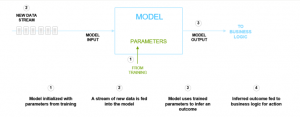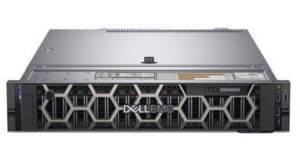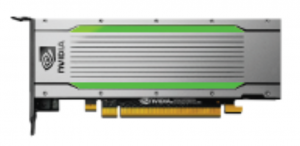How can Artificial Intelligence save you money? There is no shortage of ideas in which we might be able to use Machine Learning to change the way our businesses operate. This is certainly the case for many of the world’s leading retailers who are looking at how to use Machine Learning to improve the overall operations of their business on many different fronts, from the edge to the core to the cloud. In this article, we’ll provide an overview of how we’re able to provide a Machine Learning solution to enhance the shopping experience in partnership with Malong and their RetailAI software stack. We are excited to share a tangible, working use case to show how Dell Technologies, in conjunction with NVIDIA’s GPU-accelerated EGX platforms, provide an unmatched experience in terms of inference throughput and latency.
What is Machine Learning?
Machine Learning is just as it sounds: a machine that can learn. Simply put, it is teaching a computer to learn and make decisions based on its learning. And in the retail world, it can cut costs and save time.

Deploying Machine Learning
Deploying Machine Learning at the edge isn’t as easy as training a model and testing it with data from the real world, also known as a “test set”. There is still a process that needs to be followed much like modern software stacks and this looks and feels like what is known as Continuous Integration and Continuous Delivery (CI/CD). NVIDIA’s EGX platform simplifies this process by providing a set of tools, utilities, and packaging spanning model training, deployment, and monitoring, while at the same time providing unmatched performance within the industry for Deep Learning workloads. The familiar challenges of configuring and deploying the many versions of hardware drivers along with version of NVIDIA CUDA and CuDNN has been solved by NVIDIA through their EGX [Fig 1] platform from hardware drivers on through to Kubernetes specific plugins. The EGX platform pushes this one step further and also provides vertical specific solutions such as healthcare and smart cities, or in this case retail, specifically using the NVIDIA DeepStream SDK. DeepStream streamlines the tools, utilities, and processes required to deploy a use case such as this. Figure 2 provides a quick visual overview of the architecture of the ML pipeline.

Dell Technologies is the number one technology infrastructure provider, providing an end-to-end portfolio in networking, compute, and storage and there is no denying the need for all of these components in a production Machine Learning scenario. Throughput of an end-to-end Machine Learning pipeline depends on the throughput of all constituent components of the system. Dell and NVIDIA continue to showcase their performance as outlined below.

In this use case we will be utilizing the Dell PowerEdge R7425 [Fig 3], which is our latest 2-socket, 2U rack server. It was designed specifically with an eye on complex workloads that require different properties of compute such as scalable memory, CPU, and networking options. This platform also allows for flexible storage requirements in the myriad environments that it’s deployed, and anyone who has been in production environments for any amount of time understands how variable these environments are. This is at the heart of why we designed and engineered such a flexible platform to begin with.
The modularity and scalability of this platform enables scaling up and down respective of the requirements of the environment. Within this platform we’re also leveraging NVIDIA T4 [Fig 4] accelerators that afford us access to Tensor Core technology and it’s multi-precision capabilities to speed up inference on our platform.

Malong AI
When we leverage everything outlined above we are able to realize the impact that these technologies have on how we own and operate our businesses today. In our partnership with Malong AI we are able to utilize the Dell Technologies and NVIDIA platforms described above to accelerate the identification of fraudulent scanning of items on Self Check Out (SCO) lanes in a retail environment. There are many ways in which a person can attempt to perform scan fraud with respect to an SCO system. Some of the most common include mistakenly (or intentionally) failing to scan a barcode on an item. While others are more nefarious in that a person will perform something called “ticket switching” and replace the barcode of the item they’re scanning with something less expensive.
Malong’s technology comes into play leveraging Deep Neural Network based computer vision methods to classify the items that are scanned and identifying whether or not the correct SKU is registered within the SCO system. It is important to note, as well, that Malong’s model is one of the best performing _for this task_ in the world, winning the 2017 WebVision competition by a wide margin of a relative error of 50%. This model runs on top of the Dell EMC PowerEdge R7425 shown in figure 3, which also contains the NVIDIA T4 GPU shown in figure 3. The Malong AI software stack is built on top of NVIDIA Metropolis, which is part of the Smart City solutions encompassed by the EGX platform. Combined, these solutions from Dell and NVIDIA allow an end-to-end Machine Learning pipeline to be run physically on-site in a given retail outlet. This is the quintessential definition of an edge deployment and it proves to provide immense value to those retailers willing to re-think the way they approach loss prevention.
In Figure 5, we can see the performance numbers of this platform for this use case.

Between utilizing the Turing architecture of the NVIDIA T4 GPU and some optimization respective to TensorRT, we’re able to provide a 480%+ increase in throughput of the pipeline. This time savings quickly translates to less lost revenue from product either innocently or intentionally being mis-scanned. Which in turn translates to real savings for retailers who face these loss-prevention challenges day in and day out.
Dell Technologies and NVIDIA, along with their large partnership ecosystems, are the perfect fit to help with your digital transformation leveraging Machine Learning to help your retail company save time and money at the edge, within your loss-prevention strategies and investments.
[1] H. Zhao, O. Gallo, I. Frosio and J. Kautz, “Loss Functions for Image Restoration with Neural Networks,” in IEEE Transactions on Computational Imaging, vol. 3, no. 1, pp. 47-57, March 2017
[2] L. J. Buturovic and L. T. Citkusev, “Back propagation and forward propagation,” [Proceedings 1992] IJCNN International Joint Conference on Neural Networks, Baltimore, MD, 1992, pp. 486-491 vol.4.
[3] S. Guo, W. Huang, H. Zhang, C. Zhuang, D. Dong, M. R. Scott, and D. Huang. “Curriculum Net: Weakly Supervised Learning from Large-Scale Web Images,” in the European Conference on Computer Vision (ECCV), September 2018.
[4] B. Patel, M. Scott, H. Wei. “Retail Analytics with Malong RetailAI® on DELL EMC PowerEdge servers” October 2019.